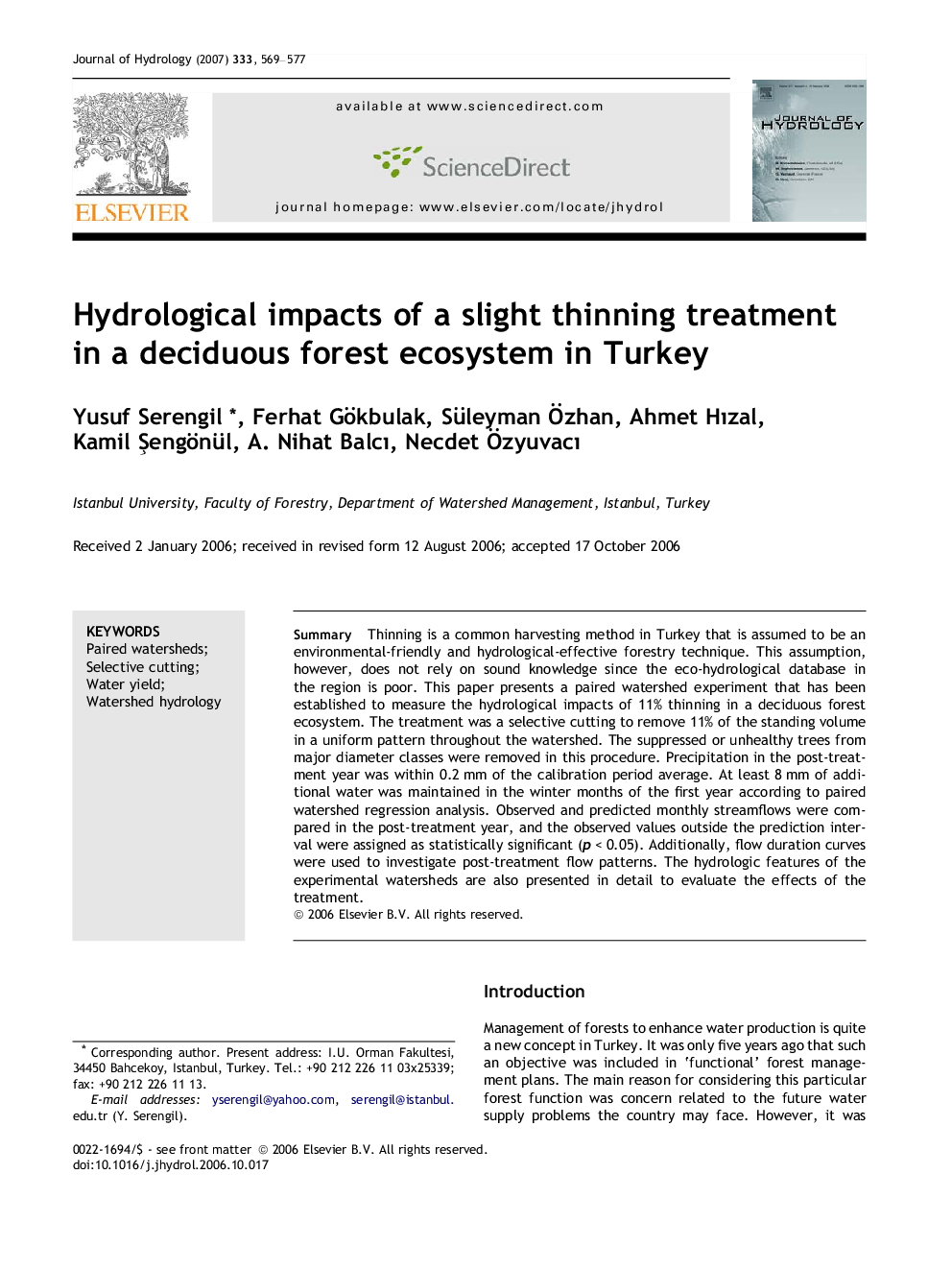| Article ID | Journal | Published Year | Pages | File Type |
|---|---|---|---|---|
| 4580050 | Journal of Hydrology | 2007 | 9 Pages |
SummaryThinning is a common harvesting method in Turkey that is assumed to be an environmental-friendly and hydrological-effective forestry technique. This assumption, however, does not rely on sound knowledge since the eco-hydrological database in the region is poor. This paper presents a paired watershed experiment that has been established to measure the hydrological impacts of 11% thinning in a deciduous forest ecosystem. The treatment was a selective cutting to remove 11% of the standing volume in a uniform pattern throughout the watershed. The suppressed or unhealthy trees from major diameter classes were removed in this procedure. Precipitation in the post-treatment year was within 0.2 mm of the calibration period average. At least 8 mm of additional water was maintained in the winter months of the first year according to paired watershed regression analysis. Observed and predicted monthly streamflows were compared in the post-treatment year, and the observed values outside the prediction interval were assigned as statistically significant (p < 0.05). Additionally, flow duration curves were used to investigate post-treatment flow patterns. The hydrologic features of the experimental watersheds are also presented in detail to evaluate the effects of the treatment.
